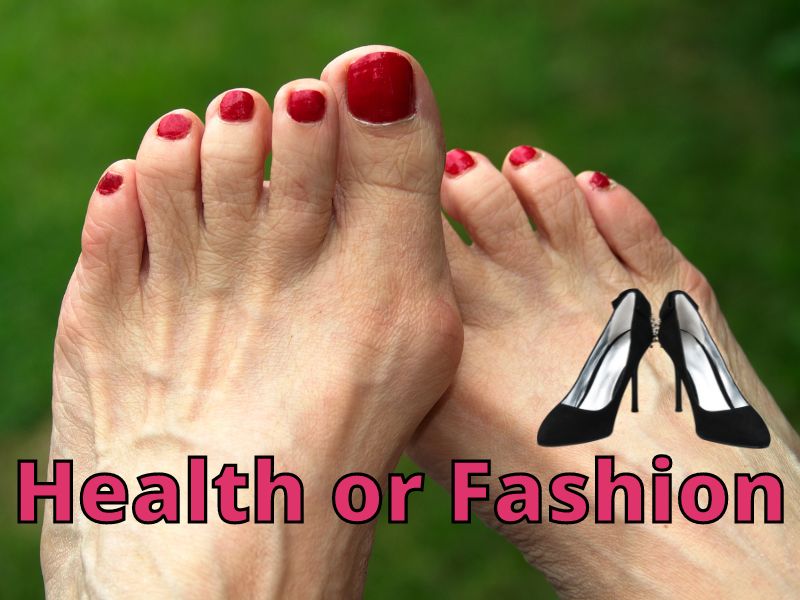I have never worn high heels as a man, but many women won’t accept anything less. What motivates them to wear high heels, and why are high heels such an important type of shoe for a majority of women in the U.S.?
Women wear high heels for many reasons, but one main reason is for power. Studies have shown that men treat women differently when they wear high heels. Many women use this to their advantage when interacting with men.
Women often insist on wearing high heels, even if their feet suffer from them, because they want to feel power over men. What are the advantages and disadvantages of high heels? We’ll review more about the power of high heels and if they are still relevant in today’s world.
History of High Heels

High heels have been used since the 1600s and before and have become a symbol of military status and power for men. They would wear them when riding horses in battle.
When women started wearing high heels more often in the 1700s, they became more of a symbol of feminity, and men stopped wearing them as much.
In the 1900s, women continued the trend of wearing high heels, while men usually only wore them as a fashion statement or when wearing cowboy boots.
Although in the 2000s, women, and society have changed their view on wearing high heels. Many women would rather wear sneakers. The sales of high heels have dropped “…by 65% year-over-year during the second quarter of 2020” (businessinsider.com)
The Transformative Power of High Heels

The trend of not wearing high heels is becoming more popular, yet, over 50% of women still wear high heels.
When discussing with one women’s shoe store owner about high heels, she commented that many women would prefer to wear uncomfortable high heels rather than a shoe with low heels because they feel a noticeable difference in how men treat them.
Some research suggests that women may feel more confident and powerful when wearing high heels. One study published in the journal Psychology of Women Quarterly found that women who wore high heels reported feeling more confident and powerful, as well as taller and more self-assured, compared to women who wore flat shoes.
However, it is important to note that these feelings of confidence and power may be due in part to societal expectations and gender roles, rather than the shoes themselves.
Men seem to treat women differently when they see a woman who is wearing high heels. There seem to be certain expectations that men and women have that dictate behavior when they interact with each other.
The High Heel Dilemma: Fashion vs. Foot Health

It may be important to note that most women are much more informed about how high heels may affect their feet in a negative way.
Women’s foot health, including increased risk of falls and ankle injuries, is important for women to consider when wearing high heels. Choosing footwear that is both comfortable and confident-boosting is when some women are choosing over high heels.
Toe Force Calculator – Just For Fun
Enter your weight, heel height, and walking speed to calculate the force on your toes. This isn’t accurate but gives an example of possible forces that could occur in different types of shoes.
Result:
WHY WOMEN ARE WEARING HIGH HEELS
- High heels can physically alter a woman’s posture and gait, making her appear more confident and self-assured. Research has shown that people who walk confidently and uprightly are perceived as more powerful (Eisenbeiss, 2008).
- High heels can make a woman appear taller, which may contribute to feelings of power. A study published in the journal Psychology of Women Quarterly found that women who wore high heels reported feeling taller and more self-assured compared to women who wore flat shoes (Nikolajeva & Sinha, 2015).
- Wearing high heels may be seen as a sign of femininity, which some women may view as empowering. In many societies, high heels are associated with femininity, glamour, and sexual attractiveness, which may make a woman feel more confident and powerful when wearing them (Lakkis, 2011).
- High heels can be a way for women to assert their independence and assert their own style and taste. By choosing to wear high heels, a woman may be expressing her own personal style and defying traditional gender roles, which can be empowering (Lakkis, 2011).
- High heels may give women a sense of power because they are seen as a symbol of status and success. In some professional settings, high heels symbolize power and success, and women who wear them may be perceived as more competent and capable (Beasley & Hughes, 2012).
WHY WOMEN ARE NOT WEARING HIGH HEELS
- High heels can cause foot pain and discomfort. Wearing high heels can put extra pressure on the balls of the feet and toes, leading to pain and discomfort (NHS, 2019).
- High heels can cause foot deformities, such as bunions and hammertoes. These deformities are caused by the toes being squeezed together in a narrow toe box, which can lead to permanent damage (APMA, 2019).
- High heels can increase the risk of falls and injuries. The higher the heel, the greater the risk of falls and injuries, especially for women who are not used to wearing high heels (APMA, 2019).
- High heels can cause muscle imbalances and lead to back, knee, and ankle pain. Wearing high heels can cause the muscles in the feet and legs to become imbalanced, which can lead to pain and discomfort in the back, knees, and ankles (NHS, 2019).
- High heels can cause nerve damage. Wearing high heels for long periods of time can compress the nerves in the feet and cause numbness and tingling (APMA, 2019).
Conclusion
Although a large number of women will not change their minds when it comes to using high heels to feel empowered and express themselves, maybe there’s a compromise.
Wearing lower-heeled shoes may still feel empowering and prevent many of the problems that high heels can cause. Another solution might be only to wear high heels on special occasions.
Regardless of what women choose, high heels are likely to be a fashion statement that will endure into the future. Now women more than ever, can protect their feet and still feel empowered because of the many shoe choices available.
References:
- Nikolajeva, M., & Sinha, P. (2015). Walking tall: The effects of high heels on female attractiveness and selection for intelligence. Psychology of Women Quarterly, 39(3), 379-388.
- Beasley, S. & Hughes, D. (2012). The shoe must go on: Footwear as a sign of professional identity. Gender, Work & Organization, 19(2), 126-142.
- Eisenbeiss, S. A. (2008). The effect of posture on perceived power. Journal of Nonverbal Behavior, 32(4), 187-202.
- Lakkis, K. (2011). The power of high heels: A cultural history. Clothing and Textiles Research Journal, 29(4), 282-293.
- Nikolajeva, M., & Sinha, P. (2015). Walking tall: The effects of high heels on female attractiveness and selection for intelligence. Psychology of Women Quarterly, 39(3), 379-388.
- American Podiatric Medical Association (APMA). (2019). The dangers of high heels. Retrieved from https://www.apma.org/pfa/PFA_HighHeels.cfm
- NHS. (2019). Foot pain and foot problems. Retrieved from https://www.nhs.uk/conditions/foot-pain-and-problems/ (Update: Page no longer available)
- This article was written in part with the help of: https://chat.openai.com/chat

